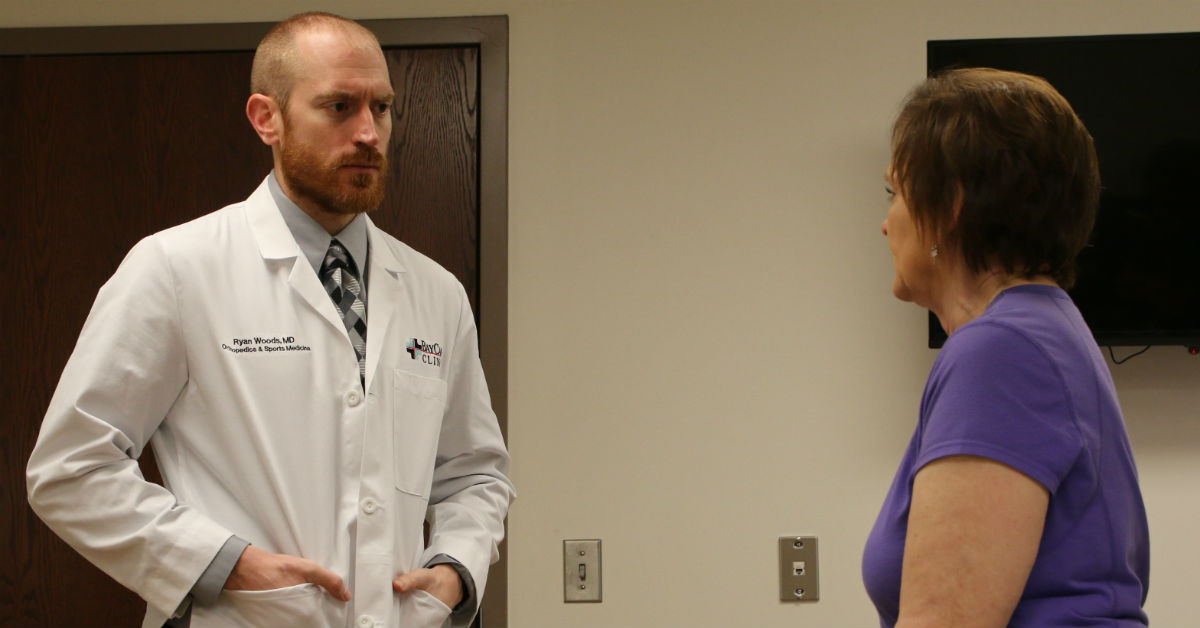
Whenever there’s lots of buzz about an exciting new medical procedure, it’s wise to step back and sort through the hype. So, let’s talk about stem cell-based orthopedic treatments.
Dr. Ryan Woods, a non-operative sports medicine physician with Orthopedics & Sports Medicine BayCare Clinic, offers stem cell-based orthopedic treatments.
Also known as regenerative medicine or orthobiologics, these innovative non-surgical treatments tap into the body’s ability to generate a healing response. They may be an option for easing pain and improving function without surgery.
Woods offers bone marrow aspirate concentrate, or BMAC, a stem cell-based therapy, to treat arthritis in the major joints – knee, hip, shoulder, elbow, hand, wrist and ankle.
Bone marrow contains platelets and a variety of powerful cells -- including stem cells -- that can help generate a healing response. Bone marrow is drawn from the pelvic bone and processed to isolate concentrated bone marrow cells. Then, guided precisely by ultrasound, BMAC is injected into the area of pain, where the cells facilitate improvement in pain relief and function. The procedure is done in the office and takes about two hours.
Ultrasound guidance is crucial for the patient’s safety. It minimizes the risk of damaging joints or nerves while drawing bone marrow or injecting BMAC. Some providers may not offer image-guided stem cell treatment.
Stem cell research is ongoing. At present, the most well-studied cell therapy for the treatment of arthritis comes from bone marrow, and not from elsewhere in the body or from manufactured sources. Woods uses only the patient’s bone marrow as the source for stem cells for treatments.
What about adipose stem cells harvested from fat cells in the belly or thigh? They show promise, but the jury’s still out on their effectiveness. The use of adipose stem cells remains largely limited to research settings.
What about amniotic fluid and umbilical cord blood stem cell products? Be wary. Many claims are made, but research has found no live or viable stem cells in these products. The U.S. Food and Drug Administration considers products containing live stem cells from another person or source to be drugs, which must be registered with and approved prior to clinical use by the FDA after extensive clinical trials. That lack of regulation also can lead to product safety issues.
Some amniotic products are said to have a high concentration of growth factors, but research doesn’t back that claim, either. Many amniotic products have fewer growth factors than BMAC.
Though research supports stem cell-based BMAC treatment for arthritis in the major joints, it’s still considered experimental and is not yet covered by insurance.
The first step is a consultation to discuss orthopedic issues and treatment options. Stem cell-based procedures may not be recommended for everyone. They are one element of a comprehensive treatment plan that also may include physical therapy, weight loss and the use of adaptive braces.